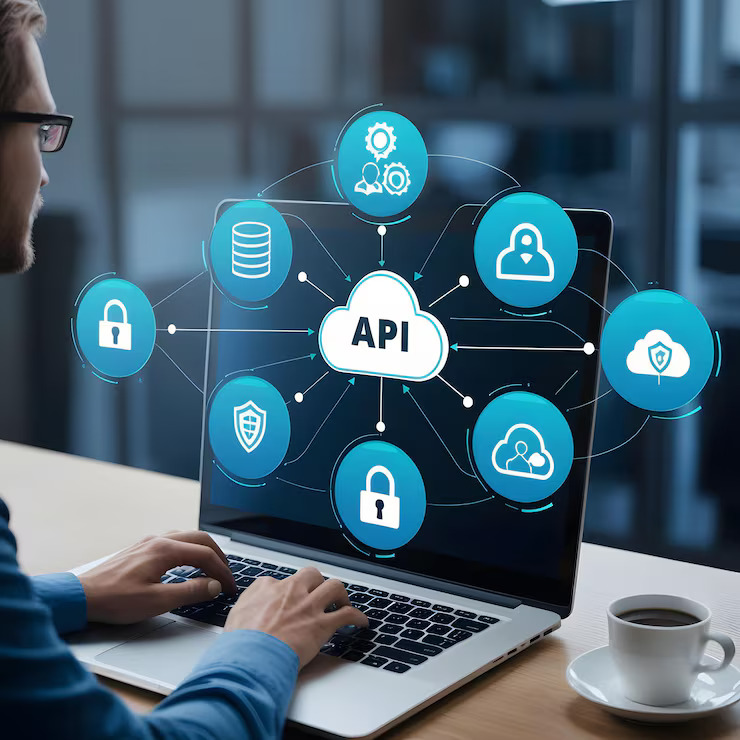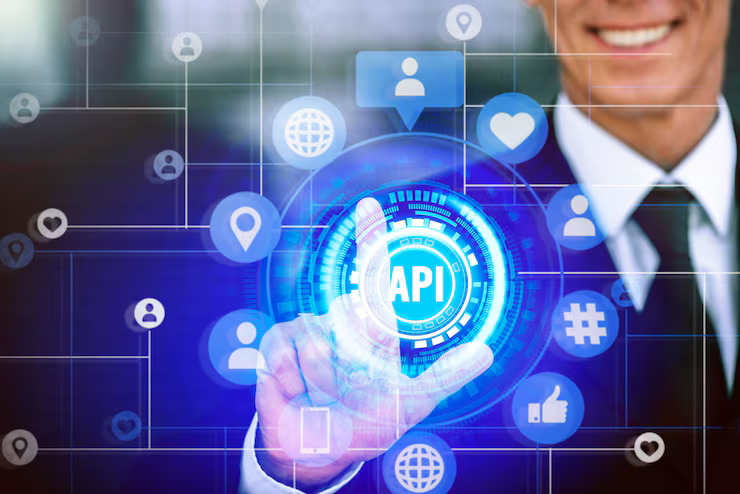The Complete Guide to API Development: Tools, Techniques & Best Practices
In the digital world, application programming interfaces serve as invisible connections. They allow smooth communication, data sharing, and collaboration between software programs. Whenever you book a ride through uber, check weather in your app or make online payments you are using APIs without knowing. APIs power everything in the connected world of today, including big commercial platforms, smart devices, and mobile apps. Without APIs, our digital experiences would be far less seamless. APIs are more than simply technical tools for businesses. They are powerful business assets. Companies that focus on building strong APIs can move faster, create better products, and even generate new sources of income. Some companies like Stripe, and Google Maps have APIs as their main product.
In this blog we will explain everything you need to know about API development, tools, techniques, and best practices so you can build APIs that are reliable, secure, and easy to use.
Hybrid app development solves this problem. It lets businesses create apps for multiple platforms using one codebase. For smart app development, hybrid apps are a smart and cost-effective choice. If you’re a startup building your first product or an enterprise improving your digital reach, hybrid app development helps you move faster, save money, and get better results.
Why APIs Matter
APIs are the backbone of modern software. They let different systems work together. Here is why they are so important:
- Integrations with other services: APIs connect apps with payment systems, customer relationship tools and social networks. For example shopify connects to PayPal.
- Extending products: Companies allow outside developers to add new features to their platforms. For example third-party apps can extend Slack or Microsoft Teams.
- Scalability: Splitting big systems into smaller APIs makes them easier to grow. Each service can improve on its own.
- Faster development: Teams don’t have to build everything from scratch. They can reuse APIs and save time.
- Revenue opportunities: Some businesses sell API access, turning it into a source of profit.
In short, APIs drive growth, speed, and new ideas. Without them, today’s digital world wouldn’t grow.

Get Free Quote

Types of APIs
Different kinds of APIs are built for different needs. Let’s look at the main ones:
REST APIs: These are the most common types today. REST APIs are simple, flexible, and work well with the web. They use standard internet methods (like “get data” or “send data”) and are easy for developers to learn.
SOAP APIs: This is an older style of APIs SOAP uses XML and has strict rules. They are used in industries like banking, or government where reliability and compliance are important.
GraphQL: Developed by Facebook, GraphQL gives clients more control. Clients can ask for exactly what they need instead of receiving too much or too little data. This is efficient for apps that need lots of different types of information at once.
gRPC: This is a high-speed communication system created by Google. It works best for microservices or systems that need fast responses. Instead of plain text, it uses compact “binary” messages, which makes it very efficient.
WebSockets: Unlike most APIs that request and respond, WebSockets keep a connection open both ways. For real-time applications like chat apps and live games, this makes them great.
The API Development Lifecycle
Building an API isn’t just coding. It’s a full process, like building a product. Here’s the usual lifecycle:
1. Planning and Requirements: Start by asking: What issue will this API solve? Who will use it, teams, partners, or the public? Set the goal and expected results before building.
2. Design: Follow an API-first style, design before coding. Use specs like OpenAPI or AsyncAPI to define what the API does. This works as a deal for developers.
3. Implementation: Pick the right language and tools. Write modular code that’s simple to update. Stick to the design plan so users get what they expect
4. Testing: Test deeply to be sure the API works right. This includes checking functionality, security, and performance under different conditions.
5. Deployment: Once ready, launch the API on servers, cloud platforms, or serverless setups. Use auto pipelines so updates are easy and safe.
6. Monitoring and Maintenance: APIs aren’t done once released. Watch how they’re being used, track errors, and keep improving them based on feedback.


Essential Tools for API Development
Modern API development depends on powerful tools at every stage.
Design and Documentation:
- Swagger / OpenAPI help design and document APIs in a standardized way.
- Postman lets you design, test, and share APIs.
- Stoplight supports collaborative design, useful for larger teams.
Implementation:
- Express.js (JavaScript), Django REST (Python), and Spring Boot (Java) make it easy to build APIs quickly.
- GraphQL APIs is a common option for Apollo Server
- gRPC libraries support fast and efficient communication.
Testing:
- Postman for automated workflows.
- SoapUI for testing SOAP and REST APIs.
- JMeter for load and stress testing.
Monitoring and Analytics:
- Kong, Apigee, as gateways that manage traffic, and authentication.
- Prometheus and Grafana for system metrics.=
- Datadog for tracking real-time performance.
Security:
- OAuth2.0 and OpenID Connect for authentication.
- OWASP ZAP for penetration testing.
- API firewalls for threat prevention.


Techniques for Effective API Design
API-First Development:
Treat APIs as products. Before building the backend, start with the contract. This avoids miscommunication between teams.
Consistency:
Keep conventions simple and predictable. Use standard responses and make sure errors follow the same format. This reduces confusion for developers.
Versioning:
APIs evolve over time. Always provide clear version numbers so users can rely on stable behavior while you update.
Pagination and Filtering:
When dealing with large datasets, don’t overwhelm users. Offer data in smaller pieces with pagination and allow filtering to get only what’s needed.
Error Handling:
It should be clear from error messages what went wrong and how to fix it. Avoid vague “server error” messages that leave developers guessing.
Best Practices For Security
APIs expose important data so they need to be secure.
- Authentication and Authorization: Use modern standards. Avoid depending only on simple API keys.
- Rate Limiting: Set limits so one user can’t overload the system.
- Logging and Auditing: Track access attempts for compliance and security.
- Zero Trust: Make sure everything is secure before thinking a request is safe.


Testing Strategies
Testing guarantees the dependability of your API. Key types include:
- Unit Testing: Checking pieces separately.
- Integration Testing: Verify that the parts complement one another.
- Contract Testing: Verifying responses match the agreed design.
- Load Testing: See if it still works when lots of people use it.
- Security Testing: Look for weaknesses before hackers do.
Emerging Trends in API Development
The API market is always changing. The following trends are influencing the future:
- Serverless APIs: Running on platforms like AWS Lambda, these are cost effective and scale automatically.
- Event Driven APIs: Use systems like Kafka, these respond to events in real time.
- AI and ML APIs: Developers can use advanced AI models without having to begin from scratch due to services like OpenAI.
- API Monetization: More companies are making their APIs into products by charging for access to them.
- Low-Code/No-Code Tools: Non developers can easily use APIs without writing code due to platforms like Zapier.


Checklist Of Best Practices
- Treat APIs as products.
- Design before coding.
- Keep names and responses consistent.
- Use strong authentication and encryption.
- Monitor performance continuously.
- Document clearly with examples.
- Version APIs to manage changes smoothly.
- Test thoroughly for reliability and security.
Conclusion
APIs are strategic drivers of innovation and growth. They make more products more powerful, businesses more flexible and customers more satisfied when designed carefully. You can create APIs that are not only functional but also enjoyable for developers by using the right tools, following proven techniques. The future of technology is about interconnection, and APIs are the threads that tie everything together. Whether you’re building your first API or managing a complex network of services, this guide gives you the foundation for doing it right.